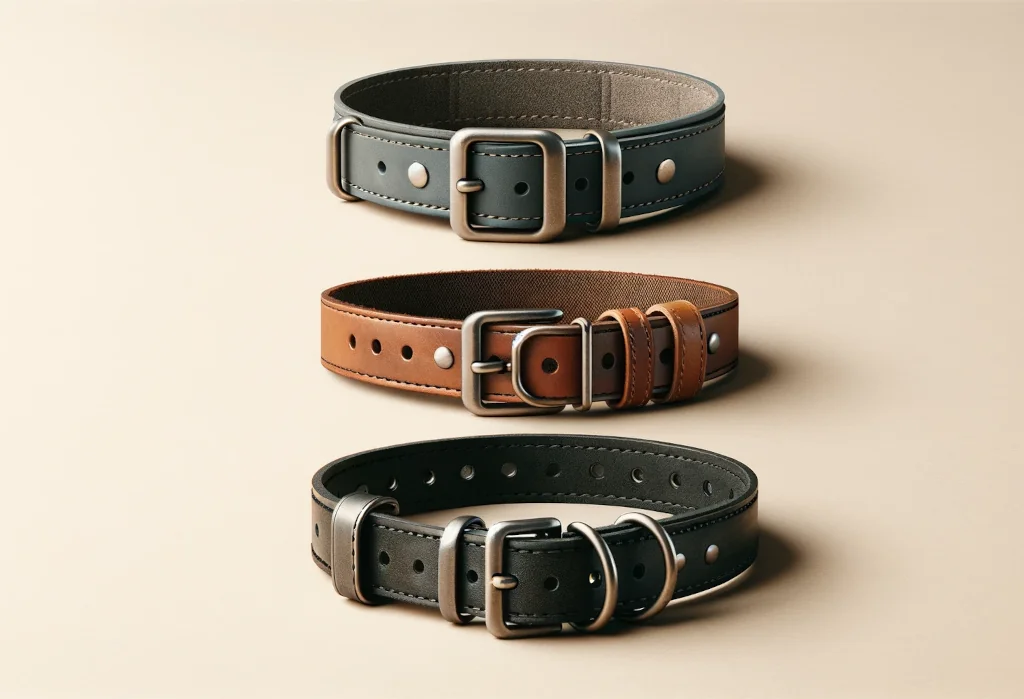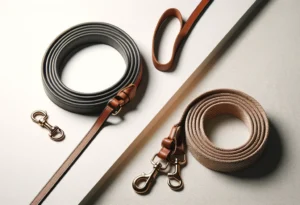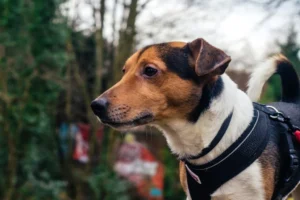
Choosing the right collar for your furry friend can feel like navigating through a jungle of options and opinions, with everything seemingly pulling you in different directions. This post will guide you to make a well-informed decision that ensures both style and comfort for your pooch.
Quick Takeaways:
- Select a collar material that balances style, comfort, and durability, like nylon for an active dog or leather for sensitive skin.
- Measure your dog’s neck with a flexible tape measure, ensuring a two-finger gap for the perfect collar fit.
- Regularly clean and inspect the collar for wear and tear, and consider rotating collars to prevent material strain.
Why Is Choosing the Right Material Important?
When it comes to selecting the perfect collar for your furry friend, the material is not just a matter of style but also of comfort, durability, and safety. Here’s a breakdown of the most common materials to help you make a well-informed decision:
-
Nylon : This is a popular choice due to its wide range of colors and designs, affordability, and durability. Nylon collars are lightweight and ideal for dogs with active lifestyles. However, they can retain odors and may cause chafing for some dogs.
-
Leather : A classic and stylish option, leather collars are known for their durability and comfort as they tend to soften over time. They’re a great pick for dogs with sensitive skin. The downside? Leather collars require more maintenance and can be on the pricier side.
-
Eco-Friendly Options : For the environmentally conscious dog owner, these collars come in materials like bamboo, recycled plastic, or hemp. They’re gentle on the planet and often hypoallergenic. While eco-friendly collars are becoming more popular, their availability and variety might be limited in some areas.
Each material has its pros and cons, and the best choice often depends on your dog’s size, skin sensitivities, and the activities you two enjoy together.
How Do I Measure My Dog for the Perfect Collar Size?
Ensuring the right fit for your dog’s collar is crucial for their comfort and safety. Here’s how you can measure your dog’s neck to find the perfect collar size:
-
Use a Flexible Tape Measure : Place the tape measure around your dog’s neck where the collar would normally sit. Slide two fingers under the tape measure. This ensures that the collar will be snug enough to stay on but loose enough to be comfortable.
-
Check the Manufacturer’s Size Chart : Once you have your dog’s neck measurement, compare it to the manufacturer’s size chart. Sizes can vary between brands, so it’s essential to check each time you buy a new collar.
-
Adjustment Range : Consider collars that offer a range of adjustments. Dogs grow, gain or lose weight, and their fur thickness can change with the seasons. An adjustable collar allows for a perfect fit throughout these changes.
Pro Tip : If you’re in between sizes, always opt for the larger size. You can adjust it down for a perfect fit but can’t extend a smaller collar.
What Collar Styles Are Available?
Selecting a collar style is not only about fashion; it’s about functionality and meeting the specific needs of your dog. Let’s delve into some popular styles:
-
Flat Collars : The most common and versatile type, suitable for everyday use. They come in various materials and are perfect for hanging ID tags and leash attachment.
-
Martingale Collars : Designed for dogs whose necks are wider than their heads (like greyhounds), these collars tighten slightly when the dog pulls on the leash but are safe and won’t choke your dog.
-
Personalized Collars : These collars can be engraved with your dog’s name and your contact information, doubling as an ID tag. It’s a stylish and practical choice for ensuring your dog can be identified if lost.
-
Light-Up Collars : For those who enjoy early morning or late-night walks, light-up collars increase visibility, keeping both you and your dog safe from traffic.
Each style serves a purpose, from ensuring safety and comfort to making a fashion statement. Consider your dog’s lifestyle, the activities you engage in together, and what you need the collar to do when selecting the style.
Remember, choosing the right collar for your dog is about balancing their needs with safety considerations and style preferences. With the right information and a bit of shopping around, you can find a collar that suits your pup perfectly and lasts a lifetime. Keep an eye out for features that cater specifically to your dog’s lifestyle, and you’ll be set. Happy collar hunting!
Can Collar Choice Impact My Dog’s Behavior?
You might not realize it, but the type of collar you choose for your furry friend can indeed have a significant influence on their behavior. For example, training collars, including choke chains, prong collars, and shock collars, are designed to correct undesirable behaviors. But, they can sometimes do more harm than good if not used correctly. They can lead to increased anxiety and aggression in dogs.
On the flip side, harnesses are often lauded for their ability to provide control without causing discomfort. Especially for breeds prone to respiratory issues, a harness can be a game-changer, making walks enjoyable rather than a tug-of-war.
But here’s the catch – no collar or harness should be considered a magic bullet for behavior issues. The emphasis should always be on positive reinforcement training. If you’re considering a training collar of any kind, it’s crucial to consult with a professional dog trainer or behaviorist. They can give you the lowdown on the most humane and effective training methods tailored to your dog’s personality and needs.
How Do I Care for My Dog’s Collar?
Taking care of your dog’s collar is like taking care of a favorite piece of jewelry – it requires regular checks, cleaning, and sometimes, a bit of TLC to keep it in tip-top shape. Here are some tips to ensure your dog’s collar remains comfortable and lasts longer:
-
Regular Cleaning: This is no brainer. Depending on the collar material, you’ll want to have a regular cleaning routine. For nylon or fabric collars, a mix of mild soap and warm water will do the trick. Leather collars, however, may require special leather cleaner to prevent cracking.
-
Dry Properly: Post-wash, make sure to dry the collar properly. Lay it out flat to avoid any warping or stretching, especially important for leather collars. Never put them directly in the sun or use a hairdryer, as high heat can damage the material.
-
Routine Inspection: Every couple of weeks, give the collar a once-over. Check for any signs of wear and tear such as fraying edges or rusting hardware. It’s better to catch these issues early before they become hazards.
-
The Right Fit: Sure, this sounds more like a selection tip, but keeping an eye on the fit is part of collar care. Dogs can lose or gain weight, and pups grow! Regularly ensure the collar isn’t too tight or too loose. You should be able to comfortably fit two fingers between the collar and your dog’s neck.
-
Unique Advice – Rotation: Here’s a nugget of advice that’s often overlooked – rotate your dog’s collars. Just like you wouldn’t wear the same pair of shoes every day, giving your dog’s collar a break can prevent strain on the material and give you a chance to clean it thoroughly.
Taking care of your dog’s collar ensures that it not only lasts longer but also remains comfortable for your dog to wear. Plus, it’s an opportunity to check in regularly on your pet’s health by making sure there are no underlying issues being masked by the collar, such as skin irritations or fur loss.
Incorporating these practices into your routine will not only keep your dog’s collar in good shape but it’ll also reinforce the bond between you and your pet. After all, every little act of caring contributes to their well-being and happiness.
Alex, a passionate animal lover, has experience in training and understanding animal behavior. As a proud pet parent to two dogs and three cats, he founded AnimalReport.net to share insights from animal experts and expand his knowledge of the animal kingdom.




